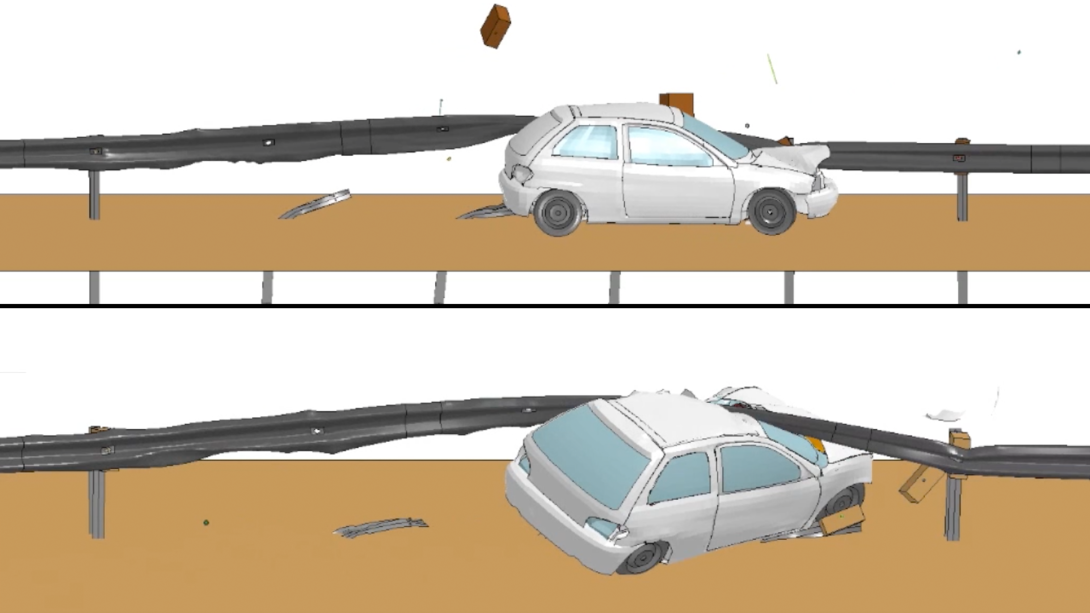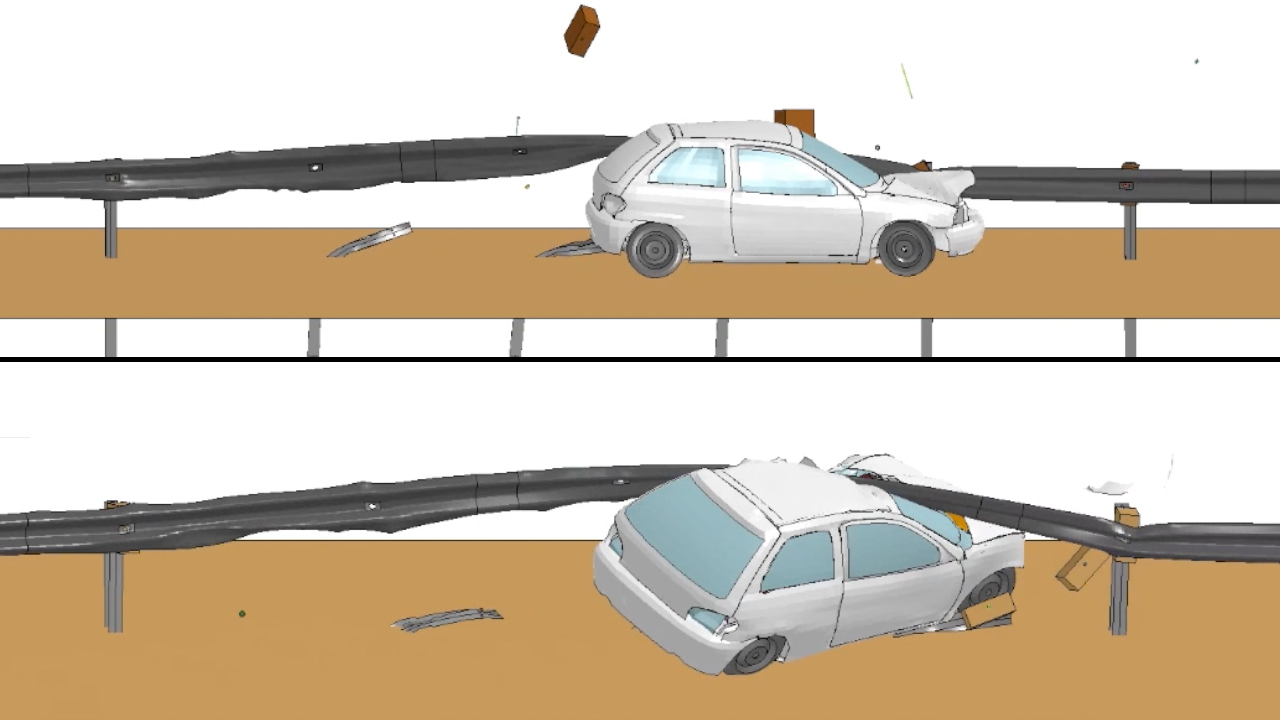
Taller guardrails could be coming down the road, according to a new study from the University of Nebraska-Lincoln.
By nearly any yardstick – present or future, crash test or simulation – a guardrail system that protects drivers on many U.S. highways and interstates could stand to be raised from 31 to 36 inches, the study found.
The university-housed Midwest Roadside Safety Facility reached the conclusion after conducting full-scale crash tests and computer simulations to determine the maximum acceptable height of the Midwest Guardrail System. Developed in the early 2000s, the Midwest Guardrail System has since become a common roadside barrier across the country.
Raising the height of the system’s rails would help future-proof it against the inevitable repaving of highways and interstates, a process that effectively lowers the height of a guardrail by reducing the distance between it and the road. Doing so would mitigate the safety risks of repaving and limit how often the guardrails must be modified or replaced, potentially saving taxpayers money in the long term.

In contrast, the 36-inch guardrail prevented this under-ride while also reducing the likelihood of a pickup truck mounting the guardrail or suffering a rollover.
“We didn’t see any instability in the vehicles (at that rail height),” said Asadollahi Pajouh, a postdoctoral researcher with the Midwest Roadside Safety Facility. “That’s what we want in our crash tests and our simulations.”
Crash and learn
After equipping a stretch of the Lincoln Air Park and two Kia Rios with high-speed cameras, accelerometers, strain gauges and other technology, the team slammed the subcompact cars into 34- and 36-inch guardrails at about 60 miles per hour. The results suggested that both guardrail heights would meet the latest safety standards established by the Federal Highway Administration and other agencies.
Though the standards can vary with a guardrail’s installation, Asadollahi Pajouh said, some are universal. Among them: ensuring that no guardrail components pierce the vehicle’s cabin or sail into traffic; keeping the vehicle from flipping, rolling or breaking through the barrier; and limiting the acceleration that occupants endure during an impact.
Asadollahi Pajouh said crash testing remains Exhibit A for any proposed modifications or additions to roadside safety systems, and the Midwest Roadside Safety Facility represents one of just a few sites that conducts federally approved tests. But crash tests are costly, so the team also uses the resulting data to calibrate simulations run via the university’s Holland Computing Center.
Scanning a site to generate a 3-D rendering of it before and after a crash can prove especially useful in helping a simulation capture the subtle dynamics of a crash, Asadollahi Pajouh said. The technology can render easily overlooked details – the size and shape of rocks lining a roadway, for instance – that allow simulations to better account for the range of possible crash outcomes and predict how altering a variable will affect those outcomes.
“With those scanners, after the test, we can measure how much a post has been rotated or how much a rail was deflected,” she said. “We can simulate almost exactly what we observed in the test.”
Those simulations supported the team’s crash test results and further suggested that taller guardrails would lessen the destabilizing forces that put pickup trucks and SUVs at higher risk of overturning.
Yet tweaking any aspect of the guardrail design can influence another, Asadollahi Pajouh said, and raising the height of the guardrail seems to put greater load on anchors residing at either end of the rail. She and her colleagues plan to evaluate whether alternative anchors would be needed – and conduct crash tests with pickup trucks – before making their final recommendations on guardrail height.

The team’s study received support from the Midwest States Pooled Fund Program, a 16-state consortium that commissions research whose findings inform decision-making throughout those states.
The researchers detailed their findings in the journal Traffic Injury Prevention. Asadollahi Pajouh authored the study with Ronald Faller, director of the Midwest Roadside Safety Facility; John Reid, professor of mechanical and materials engineering; Cody Stolle, research assistant professor with the Midwest Roadside Safety Facility; and Ramen Julin, a Nebraska graduate now employed at John Deere.









